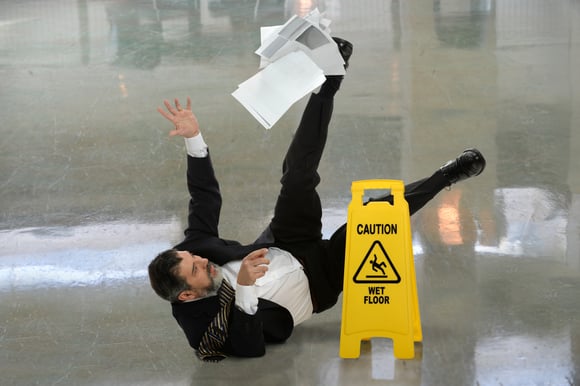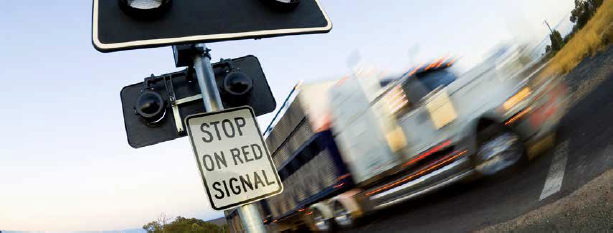Office Safety: Fall Prevention

Slips and falls are the leading cause of workplace injuries. These incidents often result in traumatic head, neck, back, and other serious injuries which affect you, your family, coworkers, and employer. In addition to pain and the possibility of temporary or permanent disability, a slip and fall injury could cost you in lost wages, out-of-pocket medical expenses, and your ability to enjoy the people and activities you love. The key to preventing slips and falls is to be able to recognize hazards and take defensive measures to protect you from injury.
Recognize the Hazards
Environment/equipment
• Spilled drinks in the break room
• Wet floors in the bathroom
• Water, ice, and mud in and around the building
• Waxed or polished floors
• Wearing shoes with flat leather or plastic soles
• Slippery ramps
• Transition from carpet to tile flooring
• Poor lighting
Personal behaviors
• Distracted walking (ex. texting, reading, talking, etc.)
• Obscured view while carrying items
• Standing on chairs and desks
• Not using handrails on stairs
• Skipping steps on stair
• Hurrying
• Carrying items on stairs
Know the Defense
Proper housekeeping
• Clean up spills immediately
• Keep file drawers closed
• Do not store items on floor (ex. purses, boxes)
• Fix damaged floors (ex. buckled carpet)
• Use "Caution: Wet Floor" signs to warn others
• Keep walkways clear of power cords, computer cables, etc.
Safe work practices
• Avoid distracted walking
• Wear shoes with slip-resistant soles
• Always keep line of sight clear when carrying items
• Use handrails on stairs and ramps
• Walk, do not run
• Use a flash light in low-lit areas
• Use three-point contact on ladders
Proper falling tips
• Keep hands free by tossing objects clear while falling to avoid further injury
• Protect your head, neck, and spine
• Turn while falling to avoid landing on your back or chest
• Don't try to stiff-arm the wall or floor
• Relax and breathe out, so the body absorbs less force of the fall and reduces internal compression
• Roll or move with the direction of the fall
Note: These lists are not intended to be all-inclusive.
The information in this article is provided as a courtesy of Great West Casualty Company and is part of the Value-Driven® Company program. Value-Driven Company was created to help educate and inform insureds so they can make better decisions, build a culture that values safety, and manage risk more effectively. To see what additional resources Great West Casualty Company can provide for its insureds, please contact your Safety Representative, or click below to find an agent.
© Copyright Great West Casualty Company 2017. The material in this publication is the property of Great West Casualty Company unless otherwise noted and may not be reproduced without its written consent by any person other than a current insured of Great West Casualty Company for business purposes. Insured should attribute use as follows: “Used with permission by Great West Casualty Company.”
This material is intended to be a broad overview of the subject matter and is provided for informational purposes only. Great West Casualty Company does not provide legal advice to its insureds, nor does it advise insureds on employment-related issues. Therefore, the subject matter is not intended to serve as legal or employment advice for any issue(s) that may arise in the operations of its insureds. Legal advice should always be sought from the insured’s legal counsel. Great West Casualty Company shall have neither liability nor responsibility to any person or entity with respect to any loss, action, or inaction alleged to be caused directly or indirectly as a result of the information contained herein.




